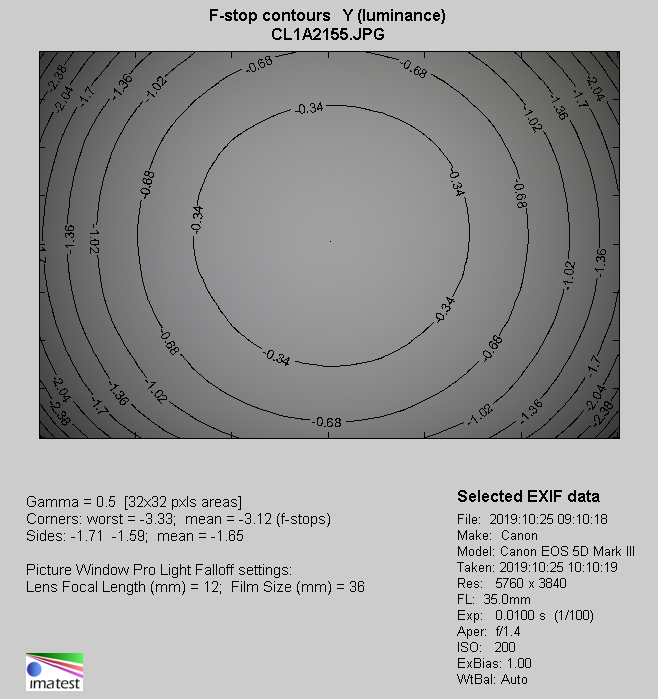Tamron SP 35 mm f/1.4 Di USD
8. Vignetting
| Canoná50D, f/1.4 | Canoná50D, f/2.0 |

|

|
No reasons to worry – at the maximum relative aperture the vignetting amounts to 26% (−0.85 EV), and by f/2.0 and f/2.8 it decreases to an imperceptible value of, respectively, 11% (−0.32 EV), and 6% (−0.17 EV).
Please Support UsIf you enjoy our reviews and articles, and you want us to continue our work please, support our website by donating through PayPal. The funds are going to be used for paying our editorial team, renting servers, and equipping our testing studio; only that way we will be able to continue providing you interesting content for free. |
- - - - - - - - - - - - - - - - - - - - - - - - - - - - - - - - - - - - - - - - - - - - - - - -
Now let's check how the situation changes after passing to full frame – below you can find photos taken with the help of the Canon EOS 5D Mark III.
| Canon 5DáIII, f/1.4 | Canon 5DáIII, f/2.0 |

|

|
| Canon 5DáIII, f/2.8 | Canon 5DáIII, f/4.0 |

|

|
Unfortunately in this case vignetting is huge. At the maximum relative aperture, in the frame corners, you lose as much as 66% of light (−3.13 EV). You deal with a high vignetting level by f/2.0 where we got a result of 44% (−1.68 EV). That aberration becomes moderate only by f/2.8 where it reaches 27% (−0.92 EV)
Then the vignetting drops quite slowly on stopping down so by f/4.0, f/5.6 and f/8.0 you see, respectively, 22% (−0.73 EV), 17% (−0.53 EV) and 12% (−0.37 EV). The aberration becomes completely imperceptible only by f/11 where it reaches just 9% (−0.29 EV).
Is it a lot, 66% of brightness loss at the maximum relative aperture? The answer must be positive but it's worth reminding here that the Sigma A 1.4/35 had exactly the same result (but its situation was a tad more difficult due to physical dimensions smaller than those of the Tamron). The vignetting value of the Canon 1.4/35L II amounted to 64% so, within measuring error, was almost identical.
If you want to see a better performance you have to look at the huge Sigma A 1.4/40 where we got 59% and the Nikkor 1.4/35G in which case the light fall-off in the frame corners amounted to 60%.
| Canon 5DáIII, JPEG, f/1.4 |
 |






